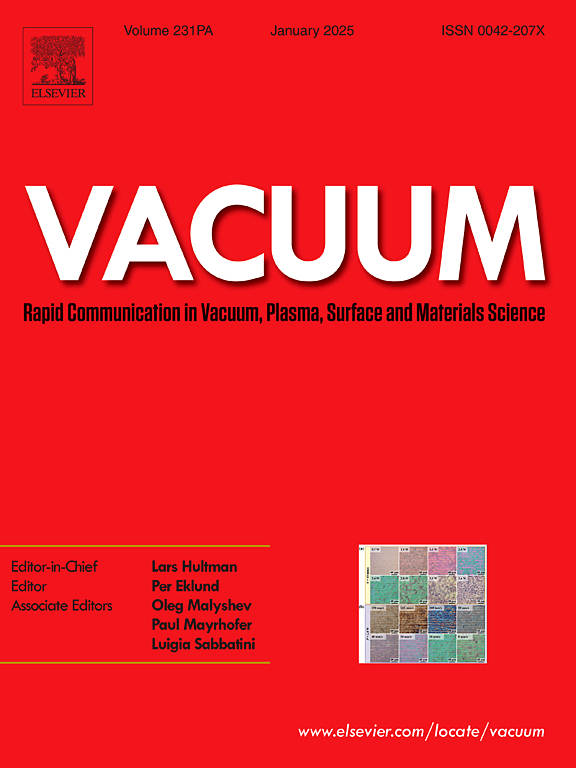自下而上剥离具有可控氧化行为的石墨烯,实现超级电容器储能
IF 3.8
2区 材料科学
Q2 MATERIALS SCIENCE, MULTIDISCIPLINARY
引用次数: 0
摘要
由于其独特的二维平面结构、室温量子霍尔效应和高强度,石墨烯在能源存储和转换领域引起了极大的兴趣。为了实现石墨烯的高效生产,人们对电化学剥离进行了广泛研究。然而,在溶液中离子插层时,石墨层之间的分子间作用力会被破坏,导致结合力不一致和产量低。为了解决上述问题,本研究引入了一种自下而上的新型电化学剥离方法,即在电解液上方进行石墨膨胀。通过防止剥离后的石墨烯与电解质接触,石墨烯的氧化作用被大大降低,从而获得 88% 的高产率。在电流密度为 1.0 A g-1 时,Go-QAS 显示出 225.5 F g-1,并在 500 次循环后保持在 220.2 F g-1 左右。经过精心设计的自下而上的剥离过程可以获得结构退化程度低、纯度高、导电性能优异的石墨烯纳米片。这项技术有望为该领域引入创新概念。本文章由计算机程序翻译,如有差异,请以英文原文为准。
Bottom-up stripping of graphene with controlled oxidation behaviors towards supercapacitors energy storage
Due to its distinctive two-dimensional planar structure, room temperature quantum Hall effect, and high strength, graphene has garnered significant interest in the fields of energy storage and conversion. In order to achieve high efficiency in the production of graphene, electrochemical peeling has been extensively investigated. Nevertheless, the intermolecular forces between graphite layers are disrupted during ion intercalation in solution, leading to inconsistent bonding forces and low yields. In order to address the issues above, this study introduces a novel bottom-up electrochemical peeling method, wherein graphite expansion occurs above the electrolyte. By preventing contact between the peeled graphene and the electrolyte, the oxidation of graphene is significantly minimized, resulting in a substantial yield of 88 %. At the current density of 1.0 A g−1, the Go-QAS displayed 225.5 F g−1, and kept about 220.2 F g−1 after 500 cycles. The well-designed bottom-up peeling process leads to graphene nanosheets with reduced structural degradation, high purity, and excellent conductivity. This technique is expected to introduce innovative concepts for the field.
求助全文
通过发布文献求助,成功后即可免费获取论文全文。
去求助
来源期刊

Vacuum
工程技术-材料科学:综合
CiteScore
6.80
自引率
17.50%
发文量
0
审稿时长
34 days
期刊介绍:
Vacuum is an international rapid publications journal with a focus on short communication. All papers are peer-reviewed, with the review process for short communication geared towards very fast turnaround times. The journal also published full research papers, thematic issues and selected papers from leading conferences.
A report in Vacuum should represent a major advance in an area that involves a controlled environment at pressures of one atmosphere or below.
The scope of the journal includes:
1. Vacuum; original developments in vacuum pumping and instrumentation, vacuum measurement, vacuum gas dynamics, gas-surface interactions, surface treatment for UHV applications and low outgassing, vacuum melting, sintering, and vacuum metrology. Technology and solutions for large-scale facilities (e.g., particle accelerators and fusion devices). New instrumentation ( e.g., detectors and electron microscopes).
2. Plasma science; advances in PVD, CVD, plasma-assisted CVD, ion sources, deposition processes and analysis.
3. Surface science; surface engineering, surface chemistry, surface analysis, crystal growth, ion-surface interactions and etching, nanometer-scale processing, surface modification.
4. Materials science; novel functional or structural materials. Metals, ceramics, and polymers. Experiments, simulations, and modelling for understanding structure-property relationships. Thin films and coatings. Nanostructures and ion implantation.
 求助内容:
求助内容: 应助结果提醒方式:
应助结果提醒方式:


